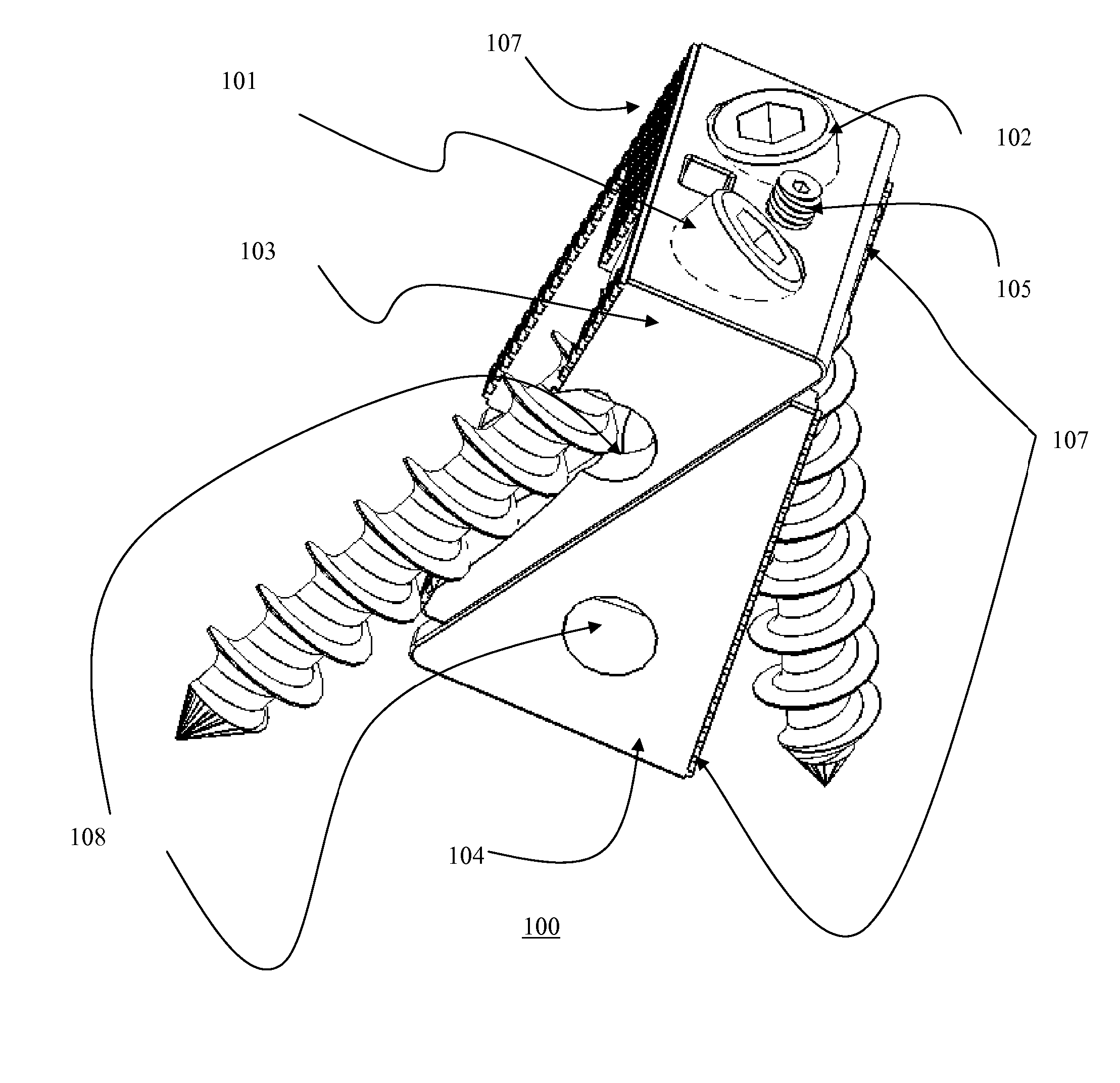Bi-directional fixating transvertebral body screws and posterior cervical and lumbar interarticulating joint calibrated stapling devices for spinal fusion
a transvertebral body screw and lumbar interarticulation joint technology, applied in the field of unique universal bidirectional screw system, can solve the problems of excessive rigidity, incomplete return to work, prolonged recovery, etc., and achieve the effect of less nerve root retraction, less screw box width and small width
- Summary
- Abstract
- Description
- Claims
- Application Information
AI Technical Summary
Benefits of technology
Problems solved by technology
Method used
Image
Examples
Embodiment Construction
[0060] 1. The Medical Device
[0061] Referring to FIGS. 1-6, the above described problem can be solved in the thoracic and lumbar spine by insertion into the denuded intervertebral disc space multiple embodiments of screw box constructs with BDFT screws.
[0062] FIGS. 1A-D illustrate three-dimensional views of the Lumbar intervertebral expandable screw box 100 with two BDFT screws 101, 102; one lateral and one medially oriented (Embodiment IA). FIG. 1E illustrates a sagittal-oblique view of the lumbar intervertebral expandable screw box 120 with two lateral oriented BDFT screws 121, 122 (Embodiment IB).
[0063] The expandable box 100 consists of top and bottom triangular sliding bases 103, 104 (FIG. 1-D). The superior and inferior segments of the height / depth adjusting screw 105 are integrated and connected to the two separate top and bottom triangular bases 103, 104, respectively. By turning this adjusting screw 105 back and forth i.e. clock-wise, and counter clockwise, the sliding ra...
PUM
 Login to View More
Login to View More Abstract
Description
Claims
Application Information
 Login to View More
Login to View More - R&D
- Intellectual Property
- Life Sciences
- Materials
- Tech Scout
- Unparalleled Data Quality
- Higher Quality Content
- 60% Fewer Hallucinations
Browse by: Latest US Patents, China's latest patents, Technical Efficacy Thesaurus, Application Domain, Technology Topic, Popular Technical Reports.
© 2025 PatSnap. All rights reserved.Legal|Privacy policy|Modern Slavery Act Transparency Statement|Sitemap|About US| Contact US: help@patsnap.com



